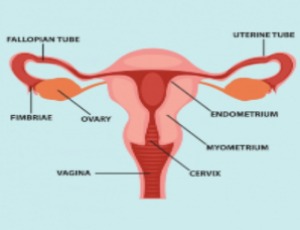Loading
Archives of Obstetrics and Gynaecology
ISSN: 2692-787X

2020
Volume 1, Issue 2, p37-51
Articles published in this issue are Open Access and licensed under Creative Commons Attribution License (CC BY NC) where the readers can reuse, download, distribute the article in whole or part by mentioning proper credits to the authors.
Circulating Cell-Free RNA: A New Perspective for Endometrial Cancer
Francesca Malentacchi, Flavia Sorbi, Natasha Cipriani, Chiara Sgromo, Lorenzo Antonuzzo, Serena Pillozzi
In order to implement the knowledge of cancer to monitor its evolution and setting, in the last decade, new minimally invasive and repeatable samples collection have been developed such as liquid biopsy.
Arch Obstet Gynecol, 2020, Volume 1, Issue 2, p37-42 | DOI: 10.33696/Gynaecology.1.006
Looking Ahead: Interesting Developments in Menopause Management
Kristi Tough DeSapri
There are many exciting developments in the field of midlife women’s health which explain how menopause symptoms, particularly hot flashes, may be an important vital sign and predictor of future health status
Arch Obstet Gynecol, 2020, Volume 1, Issue 2, p37-42 | DOI: https://doi.org/10.33696/Gynaecology.1.007
Preliminary Study Assessing the Efficiency of a New Singleuse Obstetrical Vacuum Device: Icup2®
D’Antona A, Mottet N, Lenoir P, Toubin C, Bourtembourg A, Ramanah R, Riethmuller D
A national perinatal survey in France in 2016 showed that 12.2% of women have instrumentally assisted vaginal births with vacuum extraction used in 49.8% of cases, making it the most frequently used form of obstetrical assistance.
Arch Obstet Gynecol, 2020, Volume 1, Issue 2, p45-51 | DOI: 10.33696/Gynaecology.1.008
Recommended Articles
Circulating Cell-Free RNA: A New Perspective for Endometrial Cancer
In order to implement the knowledge of cancer to monitor its evolution and setting, in the last decade, new minimally invasive and repeatable samples collection have been developed such as liquid biopsy.
Do Support Vector Machines Play a Role in Stratifying Patient Population Based on Cancer Biomarkers
Cancer is a worldwide public health issue that affects millions of people every year. In 2018 there were 17 million newly documented cases of cancer globally (8.8 million in men and 8.2 million in women), leading to 9.6 million deaths. Cancer is a vastly heterogeneous disease, with over 100 different types of cancer currently identified in humans; the most common types of cancer are lung, female breast, bowel and prostate, these four types account for more than 40% of all new cancer case
Salivary Protein Antigens for Breast Cancer Biomarkers
Breast Cancer is the most regularly diagnosed type of cancer in women in the world, making up on its own 25% of all cases, or nearly 2 million new cases in 2018, and 15% of all cancer related deaths, or around 626,700 deaths for that same year.
Is Platelet Desialylation a Novel Biomarker and Therapeutic Target in Immune Thrombocytopenia?
Platelets are small anuclear cells shed from the megakaryocyte, at a rate of ~1011/day [1], maintaining a blood concentration of 100-450 x 109/L in healthy adults. As the second most abundant circulating cells, they are becoming increasingly recognized for their versatility and cross-talks in cancer, development, immunology among others.
Obeticholic Acid, FXR Agonists, Liver Disease and Plasma Biomarkers
How medications whose major biologic effect is to reduce bile acid synthesis favorably affect the course of a variety of cholestatic and metabolic liver diseases is not immediately apparent. Also, the most frequently used plasma biomarkers for evaluating benefit, alkaline phosphatase and conjugated bilirubin [1], provide different information. The former may be misleading with respect to the course of the disease and therefore it is important to focus on the pathophysiologic basis for its use.
Biomarkers of Pembrolizumab Efficacy in First-Line Advanced PD-L1 ≥ 50% Non-Small Cell Lung Cancer Treatment
Lung cancer is the leading cause of cancer death worldwide. In 2020, a total of 19 million cancer patients were diagnosed, of which 11.4% were lung cancer, causing 18% of all cancer deaths. In 2020 in Spain, 29,638 cases were estimated.
Murine Models of Alcohol Consumption: Imperfect but Still Potential Source of Novel Biomarkers and Therapeutic Drug Discovery for Alcoholic Liver Disease
Improving our knowledge regarding the cellular and molecular mechanisms underlying murine models of alcoholic liver injury should enhance the management and therapies of alcoholic liver disease (ALD) seen in humans [1]. Although none of the animal models available reproduce all main aspects of human ALD, they still provide very
Profiling Proteasome Activities in Peripheral Blood – A Novel Biomarker Approach
The proteasome system in the cell degrades the majority of intracellular proteins. The broad nature of its substrates makes proteasome activity crucial for many cellular functions, such as protein quality control, transcription, apoptosis, immune responses, cell signaling and differentiation. The proteasome system is thus an effective therapeutic target for malignant and non-malignant diseases. In this mini-review, we would like to highlight that proteasome function has also the potential to serve as a biomarker for disease severity and response to treatment. This notion is based on the observation that the six catalytic sites of the proteasome are distinctly altered in peripheral immune cells of patients with chronic inflammatory and autoimmune diseases
Differential Expression of Long Non-coding Ribonucleic Acid (RNA) Genes in Endometriosis-associated Ovarian Cancer (EAOC): A Pilot Meta-analysis for Pathological Insights and Potential Diagnostic Biomarker Identification
Ovarian cancer affects 15 women per 100,000 in Europe [1] but it is not one disease. Epithelial malignancy the most common type of ovarian malignancy and defines the groups termed carcinoma [2,3]. Other malignant subtypes include sarcomas, germ cell tumors and sex-cord stromal tumors [1]. Ovarian carcinomas are subdivided based on histological features, the most common being high-grade serous carcinoma which makes up around 70% of ovarian carcinomas [2,4]. Up to 10% of ovarian carcinomas are endometrioid subtype, having phenotypic and molecular resemblances to endometroid adenocarcinomas that arise in the endometrial cavity [3,5] Clear cell carcinoma (OCCC) and endometrioid carcinoma of the ovary (EnOC) occur on a background of ovarian endometriosis in as many as 70% of cases [6,7]. OCCC is equally as common as endometroid type, perhaps reflecting this shared origin and collectively are often referred to as Endometriosis-Associated Ovarian Carcinomas (EAOCs). Mucinous carcinoma is less common than endometriosisrelated carcinomas at around 3% of ovarian carcinomas [2].
Detection of Undiagnosed Elevated Cardiovascular Risk Biomarkers among HIV-Positive Patients on Antiretroviral Therapy (ART) in Kigali-City, Rwanda
Similar to other African countries, life expectancy of people living with HIV infection has improved due to access to antiretroviral therapy (ART) in Rwanda. However, both HIV infection and use of ART are associated with cardiovascular disease (CVD) risks, due to adverse changes in some biomarkers, causing dyslipidemia and other metabolic imbalances. Biomarkers for CVD risk in HIV-infected individuals taking ART, has not been well characterized in Rwanda.
The Diagnostic Value of Neutrophil to Lymphocyte Ratio as an Effective Biomarker for Neuromyelitis Optica Spectrum Disorder
Neuromyelitis Optica (NMO) is a serious condition associated with inflammation. Early diagnosis and detection are critical for early intervention. In this systematic review, we investigate the role of the neutrophil to lymphocyte ratio (NLR) as an important biomarker for NMO.
Can Molecular Biomarkers be Utilized to Determine Appropriate Adjuvant Therapy in Early-Stage Non-Small Cell Lung Cancer (NSCLC)?
Early-stage NSCLC, encompassing resectable stage I-III are curable, and represents 25% of all lung cancers. The management of non-metastatic NSCLC is a rapidly changing area of clinical oncology, where utilization of molecular biomarkers has become a cornerstone in informing appropriate management. In current clinical practice, adjuvant chemotherapy is recommended after surgical resection for tumors ≥ 4 cms in size (AJCC 7th stage IB, AJCC 8th stage IIA, and higher stage groups thereafter).
Investigating the Hormetic Role of Resolvin D2 in Atherosclerotic Cardiovascular Disease: Pathways to Biomarker Recognition for Resolvins?
Introduction: Resolvin D2 (RvD2), a mediator that helps resolve inflammation, plays a role in stopping the progression of atherosclerotic cardiovascular disease (ASCVD). Understanding how RvD2 levels relate to ASCVD risk could reveal its potential as both a treatment target and a biomarker. Methods: We examined the research by Liu et al., which used an analytical method that combined restricted cubic splines with multivariable Cox proportional hazard models.
Unlocking Biomarkers for Cancer Immunotherapy: Immune Monitoring with High-Parameter Flow Cytometry
A decade ago, Science magazine named cancer immunotherapy as the breakthrough of the year, recognizing its pivotal clinical trials of antibodies designed to inhibit negative regulators of T cell function. Antibody therapies targeting cytotoxic T lymphocyte antigen 4 (CTLA-4) and programmed cell protein 1 (PD-1) initially showed effectiveness against advanced melanoma and have since expanded in use to non-small cell lung, renal cell, and bladder cancers, among others.
About Scientific Archives
Scientific Archives is a global publisher initiated with the mission of ensuring equal opportunity for accessing science to research community all over the world. Spreading research findings with great relevance to all channels without any barrier is our goal. We want to overcome the challenges of Open Access with ensured quality and transparency.
